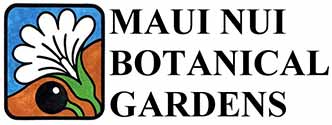Ka Palupalu o Kanaloa Returns to Kanaloa Avenue
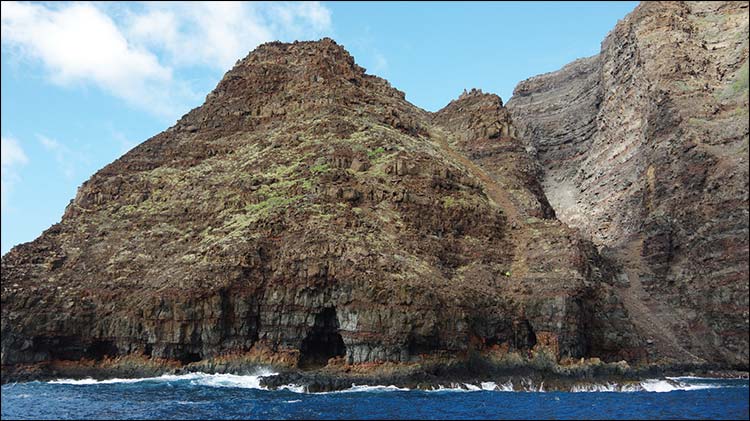
of Kaho’olawe Island Reserve Commission (KIRC)
"It is my understanding that the island of Kaho’olawe is shaped like the fetus of a child, with his head at Hanakanaea and his rear at Hakioawa. The piko and umbilical area is located around Kaneloa Gulch which is north of ‘Ale’ale. I find it of profound coincidence that during this 1992 equinox of spring, which brings a new awakening to life and birth, I should find myself using my umbilical climbing line...and witness myself descending to the mother sea…Just a week before this I had broken a finger and cracked a few ribs in the remote Hanawi of East Maui, yet I had the strength to ascend ‘Ale’ale. In pure honesty, I believe there was, and is, another power at work here, which has very little to do with me. An ancient psalm rolled through my mind ...Then I saw the Kanaloa, and time was no longer, I call it sacred time, and there before me was another being I’ve never seen." (Wood, 1992, unpublished report)
This description was written by National Tropical Botanical Gardens botanist Ken Wood about his first encounter with an endemic Hawaiian plant genus and species not previously known to modern science. Ultimately it was given the scientific name Kanaloa kahoolawensis, and in Hawaiian, given the name Ka Palupalu o Kanaloa (the gentleness of Kanaloa). Kaho‘olawe is a kino lau (body form) of Kanaloa and Kanaloa is another name for the island.
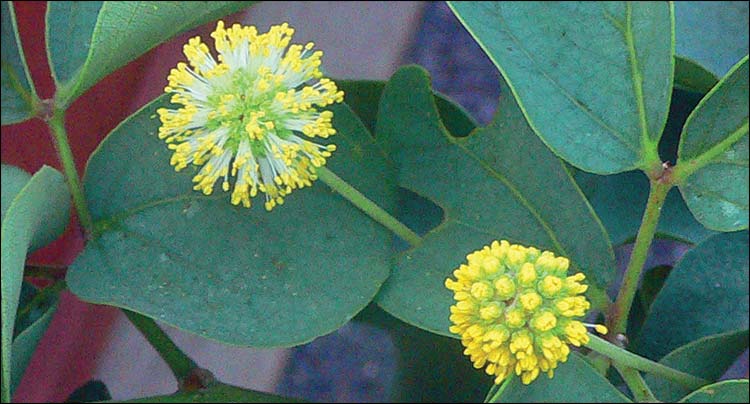
The National Tropical Botanical Gardens on Kaua‘i made many propagation efforts and were ultimately able to grow a few seedlings to full maturity in large, 50-gallon redwood planters starting in 1992. Wood and other researchers used pollen collected from these cultivated plants to confirm that,
"…through many pollen core samples collected from the Hawaiian Islands... (in addition to Kaho‘olawe,) Kanaloa also occurred on O‘ahu, Kaua‘i, and Maui. The pollen core data suggest that Kanaloa favors an arid or semiarid environment and has been found as high as 518 meters (1,700 feet). Early Pleistocene samples from the dry ‘Ewa Plain of O‘ahu contain up to 27% Kanaloa pollen. This suggests that during that period Kanaloa was a major component of the flora along with the Pritchardia palms…"
(Wood 1998, The Status of Kanaloa kahoolawensis)

Many native Hawaiian plants are well documented in Hawaiian oral and written history. Ka Palupalu o Kanaloa is not one of them. Human disruptions, first with human settlement, then with the introduction of feral ungulates, and finally the immense destruction caused by the U.S. Navy using Kaho‘olawe as a bombing range from 1941 to 1994, had pushed what was left of any remaining Ka Palupalu o Kanaloa in the wild to only two individuals by the time modern botanists rediscovered it. This is not rare for native Hawaiian plants. Many remain only in refugia like botanical gardens and in wild places that keep animals and humans away. Offshore islets, massive cliffs, and kīpuka surrounded by jagged a‘a lava are some of the places where we find these fragments of what was. In 1992, the same year of Kanaloa rediscovery, the State of Hawai‘i designated Kaho‘olawe as a natural and cultural reserve and the Kaho‘olawe Island Reserve Commission was created to plan for the island’s future. Military operations were ordered by the U.S. Federal Government to cease in 1992, but island ownership was not transferred back to the State until 1994. From rediscovery through spring of 2020, thousands of hours of efforts had only produced a few seedlings in cultivation at any one time, plus two rooted cuttings, and in 2015 the last wild plant was declared dead.

Thanks to efforts by many, but most notably Anna Palamino of Olinda Rare Plant Facility (DOFAW/DLNR), the first seedlings ever produced from cultivated plants are now making their way to a range of Maui sites to be nurtured. In total there are now 22 individual plants in existence, all on Maui. In September of 2022, three seedlings came to Maui Nui Botanical Gardens to mature and be encouraged to reproduce. Our organization has previous experience growing one individual at Maui Nui Botanical Gardens from 2008 to 2021. This experience revealed some contradictions of the unique genus. Despite the Gardens being located on Kanaloa Avenue, we have no special advantages, and that individual succumbed to disease after 13 years. Although the species was found growing on a sea stack right next to the ocean, it can easily overheat in cultivation. Although it can flower profusely, the compound flower heads rarely have the female flowers essential for making viable seeds. Since the puffball, koa-like flower heads are either male or both male and female on the same inflorescence, the rare females are extremely well hidden among the many males. This makes it challenging to cross pollinate between individuals, which is necessary for rebuilding a robust new population from so few founders. Ka Palupalu o Kanaloa survived nearly the complete annihilation of the last island it inhabited, yet the "genetic bottlenecking" when a population decreases to two wild plants makes it particularly susceptible to introduced diseases and pests, the production of unviable embryos, and other problems.

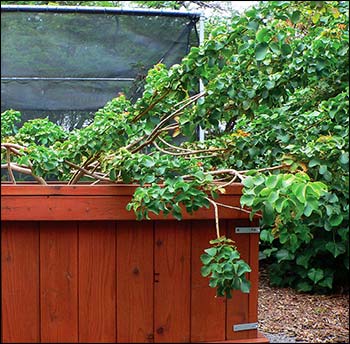
Another risk to mitigate is protection in case of high winds, now more likely due to climate change. With funding from the Hawai‘i Tourism Authority, Botanic Gardens Conservation International, and Makena Golf and Beach Club, MNBG was able to construct planters for all host sites, and hurricane protection for the three plants that will now be living at MNBG on public display. The 50-gallon planters are on wheeled tracks that can be pushed into the existing open concrete huts that were once animal housing for the County Zoo. Frames and pre-cut plywood are in place for quick assembly, and the roofs have hurricane clips. The remaining funds will be used to make signage telling the story of the species, and railings to protect the plants from visitors. When the seedlings being nurtured at MNBG and the other Maui sites begin to bloom, pollen exchange and hand pollination will begin with the goal of producting at least 100 viable, genetically variable seeds to return to Kaho‘olawe. Coastal and lowland dry forest is severely degraded and not much is left. Rare species like Kanaloa are much more likely to return when native ecosystems are restored on all islands. Please keep Maui efforts in your thoughts as we participate in this significant effort to restore a species that symbolizes so much to ko Hawai‘i pae‘āina (the land and people of the Hawaiian archipelago).
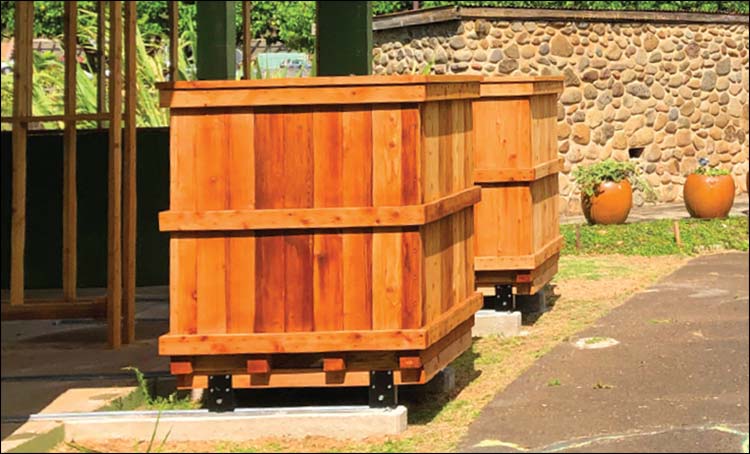
Location
The Garden is located at 150 Kanaloa Avenue in Kahului, Maui, right across from the War Memorial Stadium.
(808) 249-2798
Hours of Operation
Tuesday through Saturday,
8:00 a.m. – 4:00 p.m.
Closed occasionally for inclement weather and Hawaii State Holidays.
Admission
Members: Free
General: $10
Keiki Under 12: Free
Kama'aina: Free
(with Hawai'i ID)
